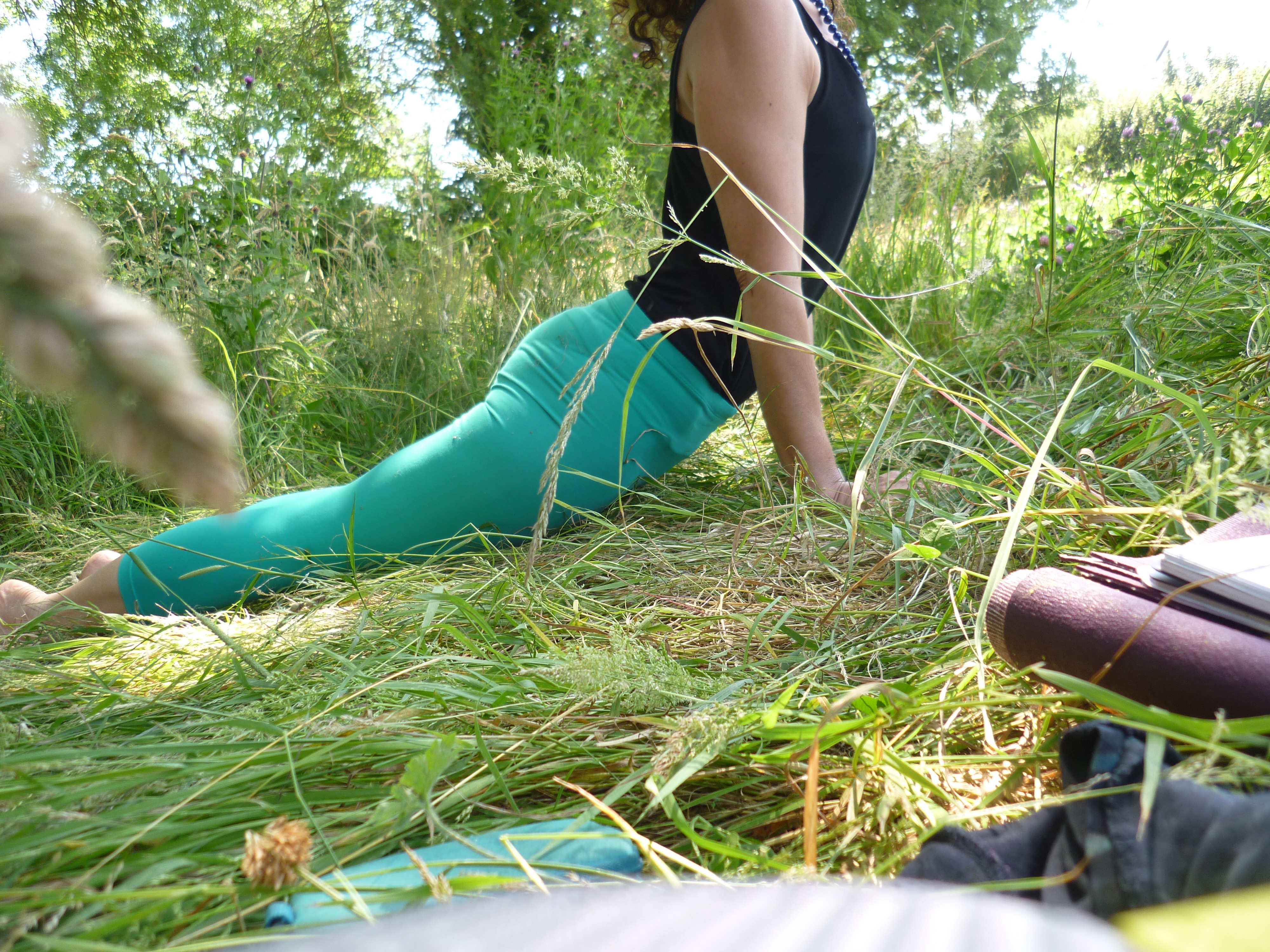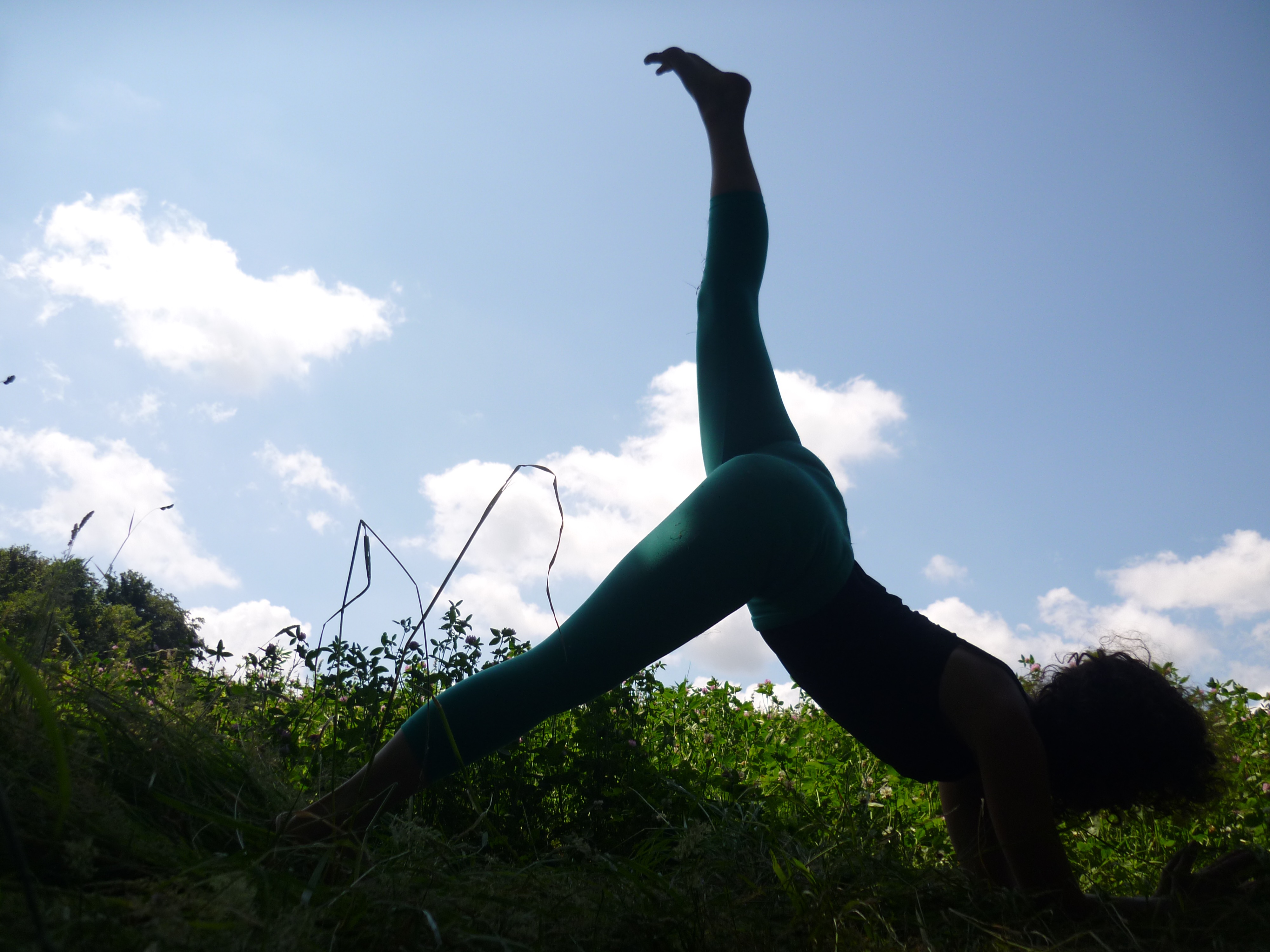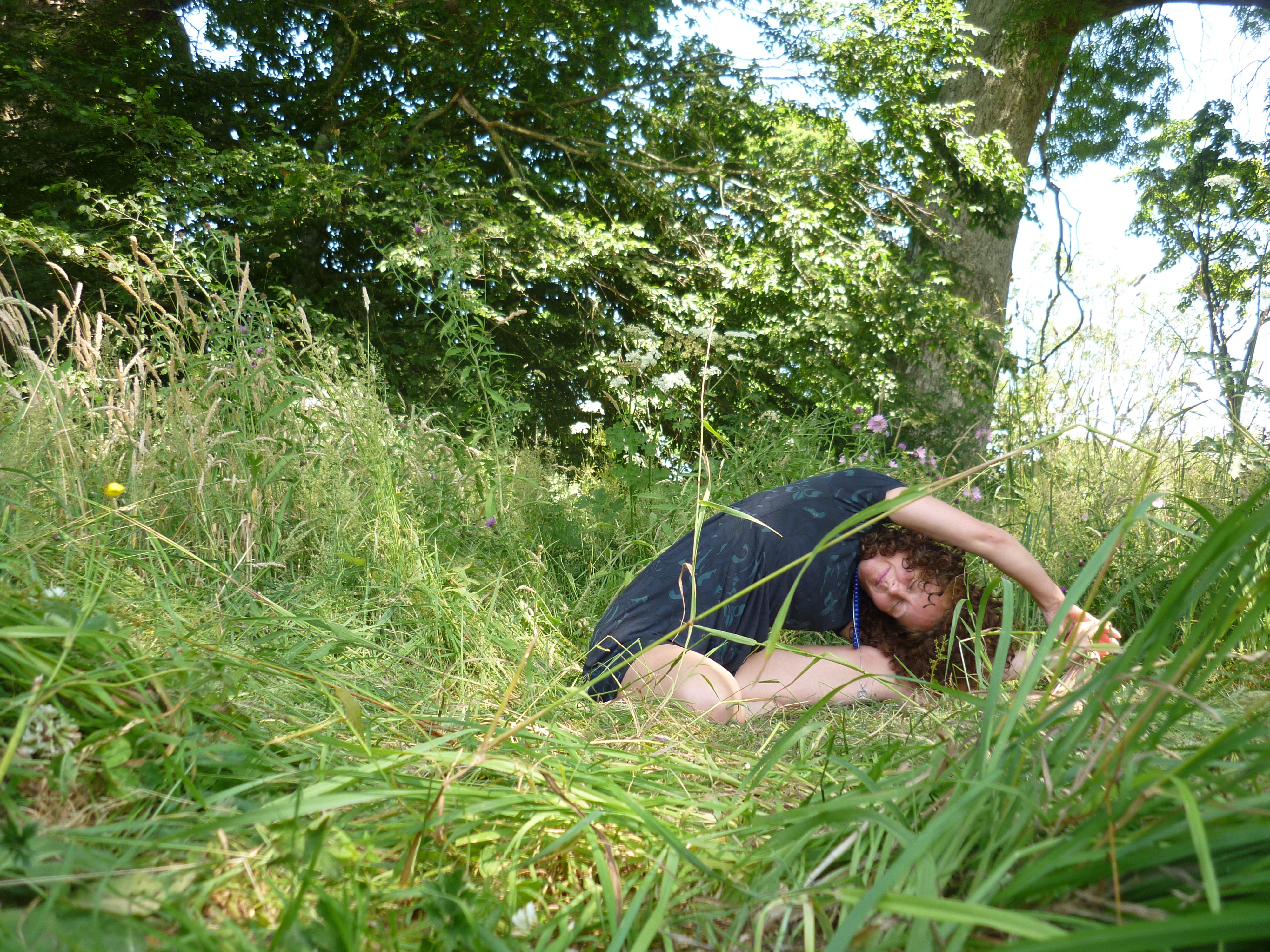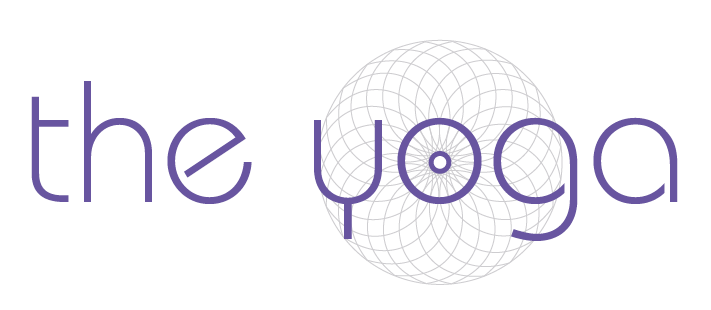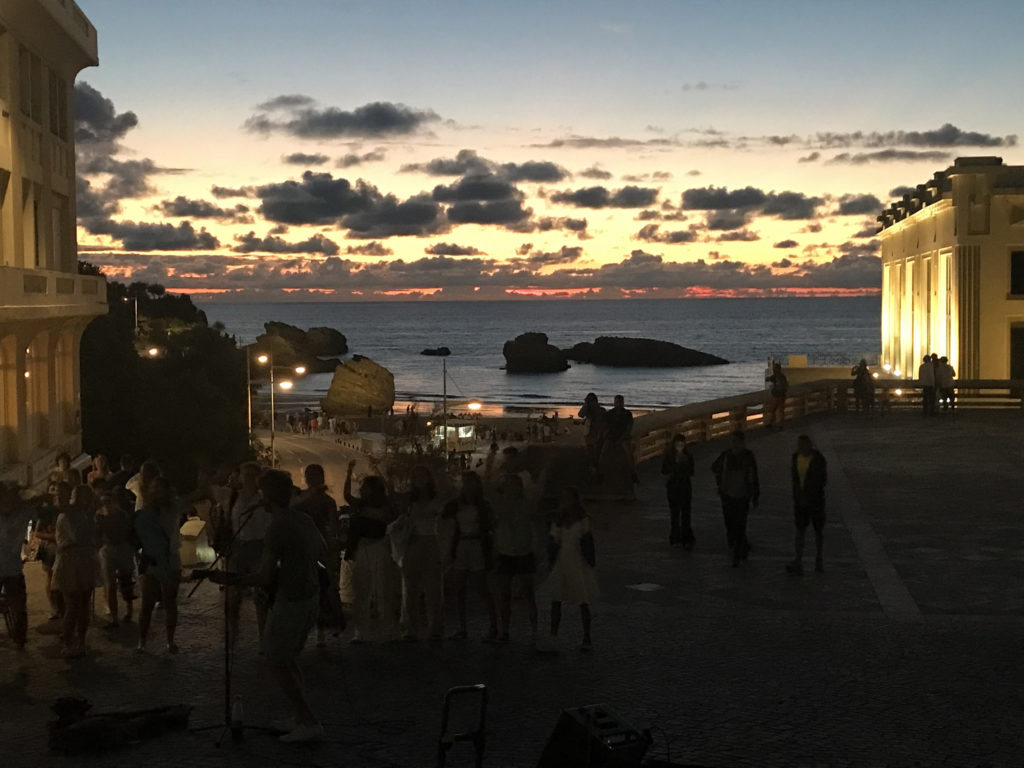blog
the yogic life of a posh vagrant
When you think of someone who has done a fair amount of yoga and is deeply committed to it what do you imagine? Beautiful house, beautiful love, days refining detox diets and the effortless ease of a bhudda? It’s all true. And completely false.
How posh is posh?
I live in nice houses, sometimes with nice people, sometimes with nice cats. I have nice boxes with my clothes stored in them so moving is easy and I know where stuff is instantly. So it is posh. It’s not the knapsack variation. Above is the picture of Grande Plage as the sun goes down – pretty dreamy! It’s not the bhuddist monk walking and not knowing where their next meal will come from, relying solely on the goodness of humankind. I still have a regular job and a backup plan. I dread the idea of walking off into life, but the truth is I’m only a journey and I don’t know what comes next.
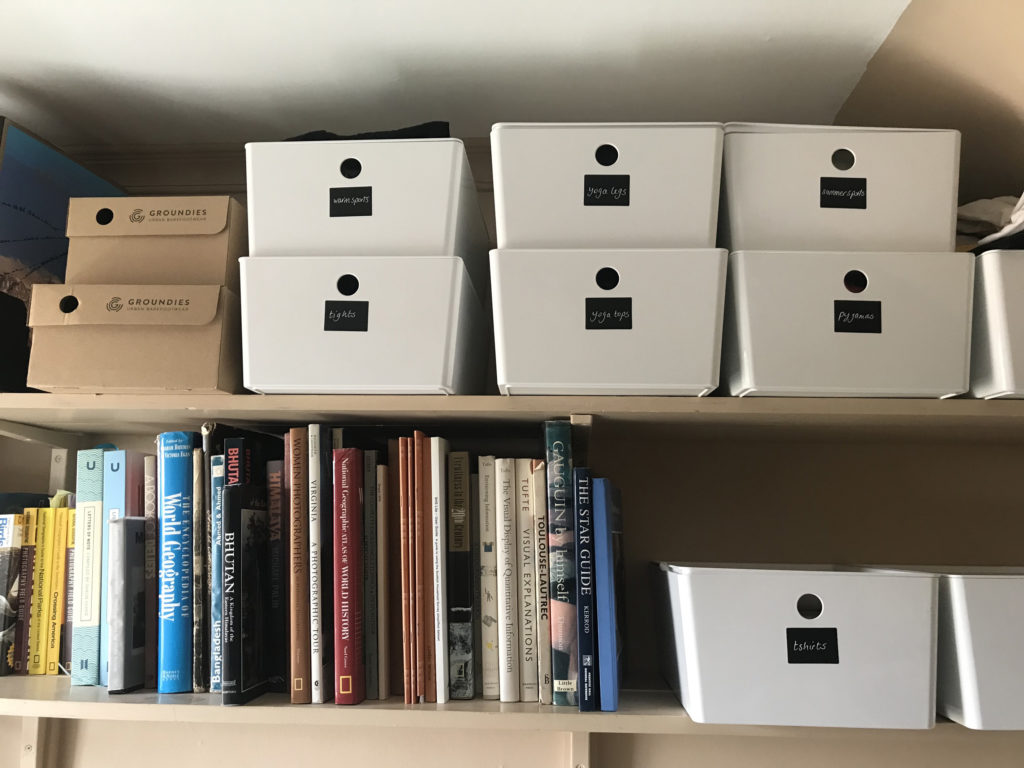
A life of longing
I always knew in theory that relying on external stability was unwise, but I couldn’t live it. I totally ‘got’ relying on something deeper, I just wasn’t ready to do it. I wanted forever, the no more moving, the neat and tidy nest. Now, on paper my life looks poor. For the last year I have been living like a posh vagrant. I left my family home and took up house sitting in September 21. I moved from cat sitting, to house sitting, to my mum and dads, to cat sitting, to my mum and dads, to Biarrtiz, where I am right now, next stop slightly uncertain.
The yoga of not knowing what’s next
So why? Why am I accepting and even revelling in so much instability in my life? The truth is I like living alone. I like singing without bothering what someone else thinks or if I sound poor, or if it disturbs them. I leave dishes in the sink, dirty, for days if I want, or I have everything neat and tidy, it doesn’t matter, no one cares. I like to cry and laugh fully, rather than taming myself. If I want to put papers on the floor and step over them I can. This sense of freedom, although minute is also massive. I’m free!
And backwards isn’t possible for me. To go backwards is to squash and squeeze myself into a space I would never fit with ease. Like a giant in a barbie dress, it just isn’t going to be comfortable. Once the giant takes off the miniscule pink lacy dress, he sighs with relief and can finally embrace his big body as ‘what is’. I’ve been squishing into a tight dress for a long time. I was so used to the feeling of the dress I didn’t know I could take it off, let it go. I thought I’d feel naked and lost without the dress. Instead I’m like a big hairy giant dancing naked on the edge of the sea in joy. How good does it feel to be alive!
Stability in instability
I thought I knew myself. I thought I knew what I needed: stability, safety, people, my stuff. I was so sure I knew what I needed that I chased it relentlessly. It has been like a dramatic change of perspective. Not a gentle gradual knowing, but more like the white hot blast of an unforgiving mirror. I thought the tight pink petrol based dress was groovy. I liked the one shoulder design and flounce of lace at the bottom, but that’s because I didn’t know nakedness. I didn’t know air on the skin, freedom of the body and space to move. Think of it like a great tree pose. There’s something alive and exciting about a tiny wobble. It creates the excitement, joy and satisfaction. If you never got that feeling of uncertaintity tree pose would lack something vital.
Trust as a spiritual discipline
I get scared for sure. What if nothing turns up? What if I get too tired of moving heavy boxes? The humorous thing is that I’m actually more scared of fixing things. I’ve been fixing things and problem solving all my life. Im a ‘make and mend’, ‘put a bit more effort in’ type of person. The problem is that this can derail a deeper movement. To keep growing I need to stay solid while around me moves, as to ‘fix it now’ is also to stop the journey. Things turn up when you least expect. Knowing my external world is forever changing helps me to settle into my internal world more. I am relying, not on a house, this, that or the other, but on a deeper place with myself.
You can think of it like trusting you can stand in tadasana and move to trikonasana with some ease… just a little bigger. This is my ‘spiritual path’, going with profound uncertainty and letting my physical body, my trust and my openness guide me to an uncertain future. This is teaching me about my body’s inherent wisdom, and that I can rely on me.
The giant dances
My life is a bit like the giant has found an excessively oversized kaftan made of the lightest cotton batiste. There is no restriction, not chaffing edges, no roughness. Just eternal space. The movement of the fabric enhances the dance of living. And today my giant is on the edge of the shore, dancing in the most voluminous kaftan ever. So for now I’m alive from the tips of my toes to the ends of my fingers, up through my spine and I’m not going to try and work it out yet.
Peaceful in chaos.
Settled in instability.
Blessed in giving up.
Hopeful in endings
Joyful in loss
Wishing you the most massive kaftan ever and a dance of freedom, when you’re ready.
one thing I wish I’d known before starting yoga

Find out what top influencers and yoga teachers say about what they wish they’d known before they started yoga. Sumaiya Shaikh asked me to take part in the article and here’s what I said:
What is the one thing you wish you knew before you started yoga?
I wish I’d known that every bad bit of your life can make you a great yogi and teacher. Sometimes we think yoga is for the perfect people, actually the opposite is true – yoga is best for those who are ready to change. It’s OK to be a bit broken and battered by life. It’s only when you’ve been through tough stuff that you realise what a powerful tool yoga is for both mind and body. When you know this for yourself it changes your practice and teaching. Transforming your own life can lead you to take that healing to others. That’s a great blessing.
To see the whole article and hear from inspiring teachers and yogis go here.
Yoga and imposter syndrome
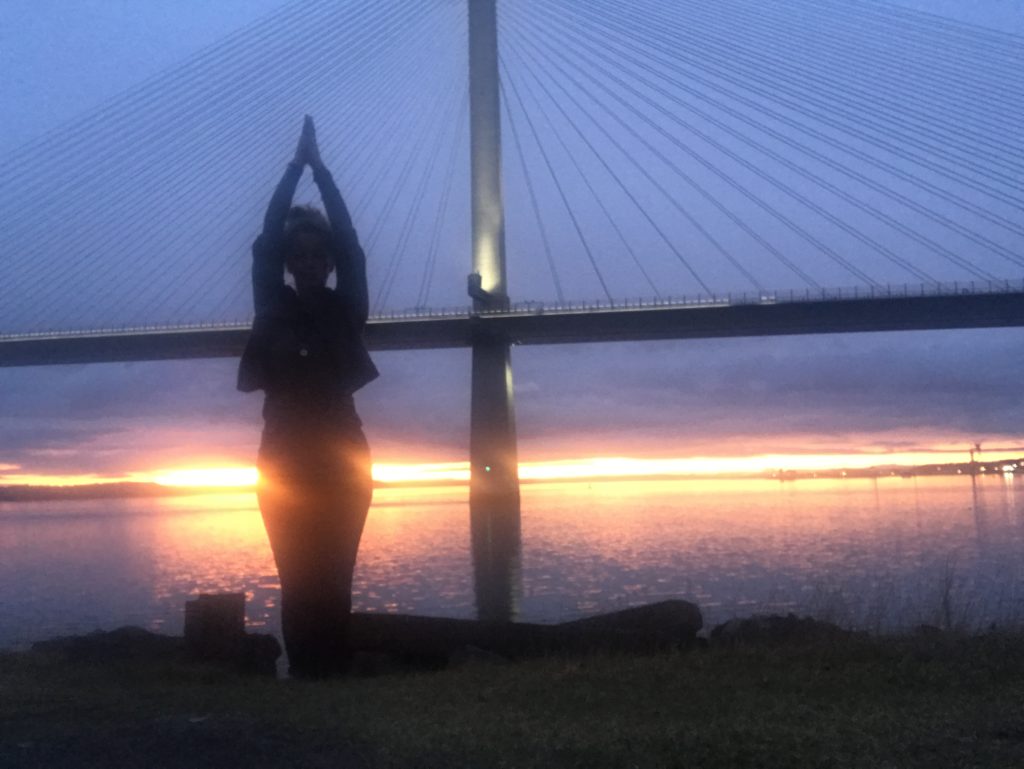
Imposter syndrome is when we doubt our abilities and fear being found out. You might dismiss evidence of you fitting in as ‘not real’ or feel guilty when successful. Some research shows 70% of people have experienced it and more women than men. With the rise of social media and working online this may rise again as we compare ourselves not only to our peers but the whole world.
So how are yoga and imposter syndrome linked?
Yoga is a mind body practise aimed at bringing better harmony and peace. While a beautiful discipline it is also synonymous with looking wonderful and the ‘living your best life’ philosophy.
Don’t let it define you
It is important to notice when you tell yourself you don’t meet the standards or aren’t good enough. It is just as important when you notice this to hear it and gently turn away from this thought pattern. Buying into your imposter syndrome will stop you from going to yoga or enjoying it.
Comparing yourself to other yogis
Being in class with the flexible beautiful people is enough to set anyone’s stuff off. This can really get in the way of doing yoga. There is the yoga of assuming a body position, which is not what I term as yoga – this has no difference to gymnastics. The become yoga, for me it has to become mindful and breath cantered. If you are standing in a supermarket queue, very mindful of your body sensations, holding your bags and focused on your breathing, is this yoga? I would say yes, as yoga is qualitative and the awareness or mind space is integral. You might be in a yoga class, wearing your branded leggings, a mantra tshirt, body lithe and gently toned with your legs wrapped into lotus pose while doing a shoulder stand…. And to me you could still not be doing yoga. Comparing yourself to others is the death of true yoga so go lightly.
Judging yourself
The role of judgement in yoga is refined. How can you get deeper into an experience is you shy away from feeling? For me yoga is about coming more into my body, listening to my feet, the sensation in my thighs, how my bell responds and my breathing changes. To listen carefully you could describe as a judgement but it is subtley different. Here are 2 options, basically saying the same thing but framed differently.
Judgment
-
-
- My legs aren’t strong enough, I’m not flexible, I’m not good at this, My body is too fragile
-
Awareness
-
-
- My legs feel shakey, weak. I can’t move my spine much here, My body feels vulnerable
-
It is good for me to notice how I, and particularl body parts, feel. This helps me to connect more deeply and acknowledge my present. To spend time judging yourself is demoralising and makes you more goal focused, which isn’t as helpful for yoga.
The perfect pose
This is perfect pose, Siddhasana. Perfect pose is the perfect place to challenge yourself to find and hear your inner voices. Your knees probably won’t rest on the floor, your feet probably won’t neatly line up, your lower back probably won’t lengthen and lift and your mind will probably find itself filled with thoughts of mild to severe discomfort and how you’re getting it wrong. So now try to do a yogic Siddhasana, find ease in your body, find f=comfort, allow your legs and feet to find something approximating the pose. Here comes the yoga: settle into your breath, and allow your mind to settle into your body.
Teaching yoga
Teaching others yoga is a wonderful way to bring up your stuff. It brings up many expectations, now people may think you’re one of the beautiful flexible people. Your students might think you’re always calm and sanguine. They may think you have the answers to everything or presume you are wise. The truth is you that you are all these things, but not 100% of the time. Teaching yoga can lead you to thinking you’re never good enough, and are just about to be found out as a ‘partly broken, sometimes downright grumpy, shambling non-yogi’. What if you hurt your ankle? Have you failed as a yoga teacher as on some level you have hurt yourself and failed to succeed at ‘ahmisa’? If you put on weight, loose weight, get bad skin, shout at the guy who swerves his car at yours, swear at the tv when bad news comes… have your proved yourself to be an imposter? I think a healthy dose of loving kindness is vital in these real life moments. You’re supposed to muck up. You’re human. If you’re into full on yoga philosophy, then if you are alive then you’ve got some stuff to work on. This is just your stuff and all a valid part of the journey to Samadhi and ultimate liberation. So take a chill pill, enjoy being rather human, or as a dear friend would say ‘fucked up and beautiful’.
The perfect prayer
Yoga is so easy to get caught up in perfection and fuelling imposter syndrome that there is an ancient prayer devoted to dealing with our mind stuff. I like it as it addresses perfectionism head on, and blasts it right out the water:
This is perfect that is perfect
Om Purnamadah Purnamidam
Purnaat Purnamudachyate
Purnasya Purnamadaaya
Purnamevaa Vasishyate
Om Shaantih Shaantih Shaantih
Om
This is perfect
That is perfect
Take perfect from perfect
And you’re left with perfect
Om Peace, Peace, Peace
What you give to yourself you give to others
There is something very beautiful about owning your mind, body, life stuff and being kind to yourself as you undo your thought and body patterns at the speed that it happens. This is the path of yoga and self-compassion. For any of you still sitting on the fence and thinking about giving yourself a good jab in the ribs, rest a while. You can’t give what you don’t have. What we give to ourselves we cannot fail to give to others. It’s a beautiful truth. To look after others you need to look after yourself.
Go enjoy some imperfectly perfect yoga, with some messy and kind of nice breathing followed by a spot of noisy meditation that might at some point subside.
The power of yoga, goal setting and dealing with change
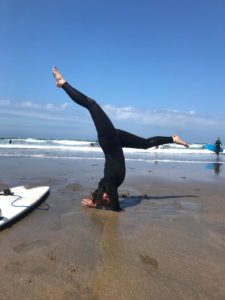 Can you guess how the headstand picture relates to change and yoga? Change is hard, many of us fear it and struggle when faced with saying goodbye to something. Changes happen, whether you want them or not. Even if the change is one of the worst things you could imagine you will be ok, one day. The flip side of change is embracing newness, transformation and saying hello to something different. Read on to find out more about how yoga can help you with both. There are four things people struggle with: leaving the old, letting go, coping with uncertainty, joy and the ongoing nature of change. This blog shows how yoga can help you in times of change so you can move towards your future.
Can you guess how the headstand picture relates to change and yoga? Change is hard, many of us fear it and struggle when faced with saying goodbye to something. Changes happen, whether you want them or not. Even if the change is one of the worst things you could imagine you will be ok, one day. The flip side of change is embracing newness, transformation and saying hello to something different. Read on to find out more about how yoga can help you with both. There are four things people struggle with: leaving the old, letting go, coping with uncertainty, joy and the ongoing nature of change. This blog shows how yoga can help you in times of change so you can move towards your future.
Goodbye, Auf Wiedersehen, Goodnight
Usually we fear change and cling to old patterns and security. We cling to loves, homes, relationships, routines, jobs, making a bad decision or visions of ourselves. Fear can be paralysing, it can hold us tight to indecision and numbness.
Fear: How can yoga help you cope with fear?
Fear and aggression can be seen as opposites, through yoga you learn to stand your ground. Don’t run, don’t fight. This applies to both the pose and the emotion. Mountain pose is an excellent one for feeling fear, learning to be present with feelings rising and falling, cantered and keeping your eyes on the horizon. You can try an in-depth yoga nidra and do savasana with a weighted eye pillow. This can help your mind to soften back and make space for new feelings of calm to replace the feelings of anxiety.
Breaking eggs to make an omelette
Breaking things, especially if in some ways they are great is very hard. The Hindu god Shiva is the lord of destruction. Seen as a black figure stamping on tiny humans, with an angry face and red rimmed eyes, he is somewhat terrifying. It is easy to see Shiva as something to be avoided, but a deeper look at his role is being a destroyer for new life and transformation to occur in the ‘you can’t make an omelette without breaking some eggs’ tradition.
Grief: How can yoga help you face breaking something?
Breaking things is hard, and involves a process of letting go, whether that letting go is of a vision of yourself and some part of your life that you once loved. This involves grief. Consider what you grieve. Yoga can help you in this process by coming back to rest into the movement of your breath. When you feel grief, loss and uncertainty you can come back to your breathing and listen deeply. Each out breath is the death of a breath, but it is needed to breath in again. Yogic breath awareness can help you become clearer and more truthful with yourself. Hear the sounds, feel the physical movements and then go deeper into the sensations of the hope and energy of the in breath and the letting go and releasing of the outbreath. Find your balance, ability to release gracefully in your breath.
Finding the ground in choppy waters
Being at sea, feeling the ground slipping away beneath your feet, having the rug pulled from under you, these are all phrases relating to feeling unsettled. How do you feel settled when something you thought was forever isn’t? How do you cope with not knowing if you will be alone forever or where you’re going to live? Wanting to give up your job or change home? Seeing your children grow away or your loved one become seriously ill? People love to be scared at roller coasters and horror films (neither for me, thanks), at times people seem to enjoy being angry and stoking the flames of their fury and welling up with righteous indignation, but who welcomes feeling confused and unsettled? So, let’s start. If we knew how everything would turn out life would be pretty boring. We’d cook the same meal every night and never try new food, wear the same clothes and meet only the same people if we didn’t want some uncertainty. We need a certain amount of change and unsettlement to feel good, we flourish on it. The moment when a ball comes flying towards you and not knowing how you will react is exciting. Sometimes beautiful things happen, other times you get smacked in the face and get a black eye (see lovely mother son picture below). I didn’t enjoy the day of pain, but since then it’s been a lot of fun: I’ve never had a black eye before. I’m enjoying the newness…. and the fact it will pass.
 Instability: How can yoga help you when you feel ungrounded?
Instability: How can yoga help you when you feel ungrounded?
Yoga is a great friend to feeling ungrounded, and the answer is in the first sentences of the paragraph above. It’s in the feet. When we pay attention to how our feet meet the floor, how to get a feeling of connection to the space below the floor or activate our arches we are waking up the feet and our connection to the floor. This is excellent at helping you be more grounded. Think of tree pose where we have to get ok with swaying, wobbling, taking our foot down before we want to – this is life in a pose. We have to be with changes, allow them to get us off balance, so we can re-find the ground. I think the best tree pose is moving, that way you know you’re growing.
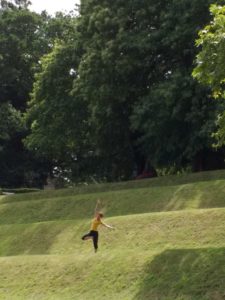 Praise the lord change is coming
Praise the lord change is coming
In life it often necessary to transform and change. Sometimes we greet this with welcome relief. You might find your inner risk taker gets excited – however much you love security ‘the risk taker’ is in all of us. You might start with hints of feeling ok, then find pockets of optimism, that gradually become a steady openness; less a heady zoomy feeling and more of a pervasive openness that sits with you like an old friend. Once you have grown your roots you might find joy. If it doesn’t happen, no worries… some changes ask more of us than others, and most important is to be real.
‘Praise the lord, change is coming’
Hidden Figures (great film about black women in the space race film)
Joy: How can yoga help you embrace and celebrate change?
Embracing change requires courage, openness and flexibility. You can think of these as emotional qualities, but they are just as much physical qualities that live in the body. Our flexibility is mental and physical. Too much emotional flexibility and we can’t find our own truth or find our own path. Too much physical flexibility and our joints become unstable and we tend to lack strength. Too little flexibility and we lose our openness to the possibilities of being present and adaptive. To little emotional flexibility and we fly off the handle at tiny things and lack an ability to feel our emotions. Yoga can help you find the emotional qualities you need via the physical qualities you. In plank pose we often focus on strengthening, in forward bends we often focus on flexibility, physically and that brings the emotional realm with it.
Like a breath of fresh air
Whatever you feel now, it will change. Sad and bad feelings go, with time and enough yoga. Whatever joy you experience know it also will change, it may wax, it may wane. There is a freedom when we accept this. A freedom from trying to escape things that are hard, a freedom from seeking pleasure too doggedly. We find more of our internal balance.
Freedom Day: How can yoga help me accept the cyclical nature of living?
The main picture of a beach headstand exemplifies the qualities needs to move forwards. It was taken on holiday in Cornwall this Summer. In the pose there is a direction towards a full headstand, but at any point the direction might change. The sands beneath my arms are continually shifting, so it is an ongoing experience of adapting my body’s movements to the movements of the environment around me. I can decide to go further into it or release down, adjusting my expectations to ‘what is’. It is the perfect picture for how we meet change: going into it, finding instability, resting back and re-finding stability to grow again. I might lose my balance or a wave might come. Ultimately, we settle in to emotional balance through enjoying the ups and staying present with the downs. This happens through yoga too: in all fours we arch up into cat pose and dip into cow pose. We fluctuate, flow and move. In meditation we find a quieter space beyond our emotions and physical body. When you embrace change you allow yourself to choose, and to choose what is right for you. By making small choices that feel right we can land upon and bigger more transformative right. Come back to your breath, feel the in breath of hope and action, and the outbreath of acceptance and quietness. Your breath is with you, always, it is your life, and in every moment, it can bring you back to the most powerful life lesson: breath in, breath out.
Yoga can help you say goodbye, break old habits, find the ground then joy is future, and one day feel that breath of fresh air. July marks the beginning Hajj season, an annual Islamic pilgrimage to Mecca. Hajj means ‘to go out, heading towards a great aim’. What is your great aim just now? Allow yoga, breathing and mediation to support you in the changes you need to move towards your ‘great aim’. I wish you stability, change, choice, and a movement towards your ‘great aim’.
No Results Found
The page you requested could not be found. Try refining your search, or use the navigation above to locate the post.
